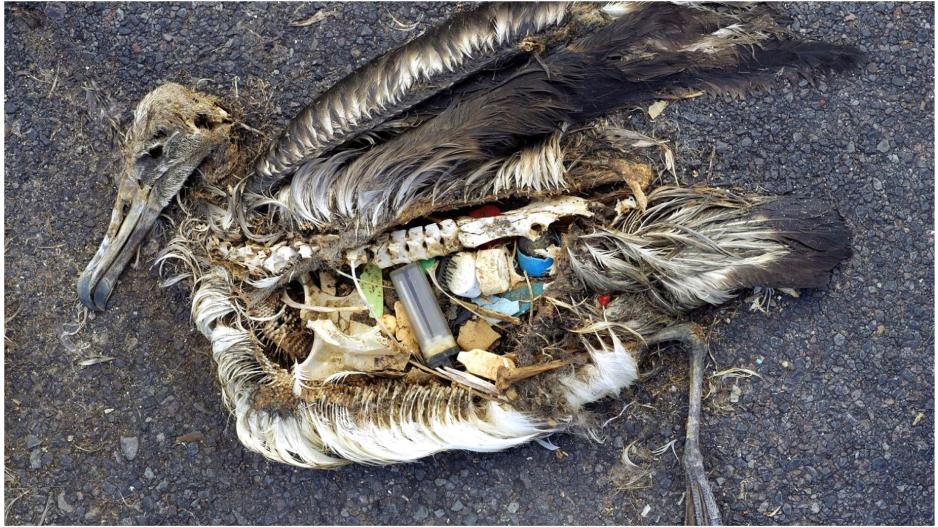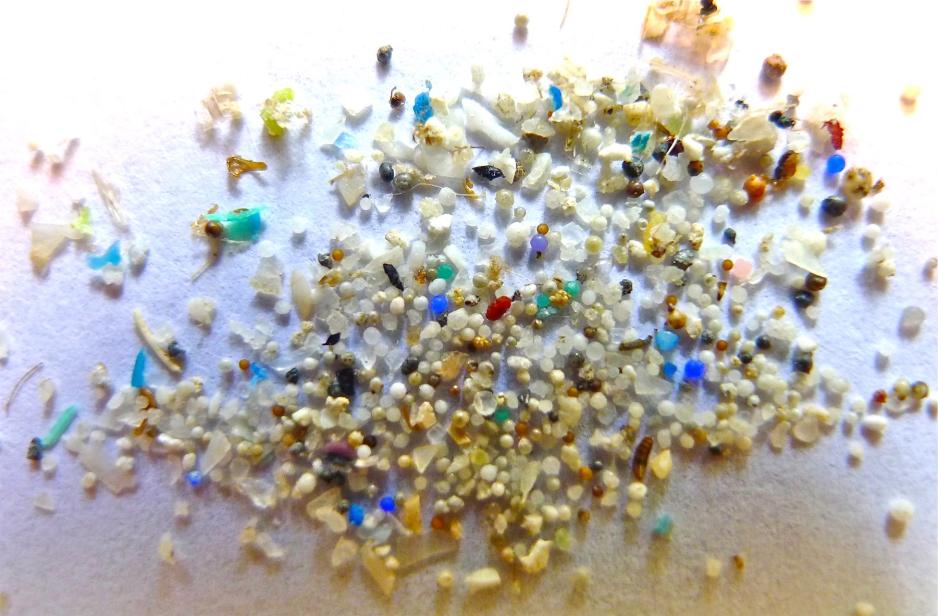Scientists Fears That the Barents Sea Will Be Filled With Trash

A dead young albatross that has been fed with plastic waste bits from the ocean. Senior Researcher Geir Wing Gabrielsen at the Norwegian Polar Institute has conducted research on sea birds at Svalbard for decades, and the results are alarminig. (Photo: Chris Jordan/Wikimedia Commons)
Scientist Geir Wing Gabrielsen has spent every summer for the past 36 years in Svalbard. Today, he fears that the Barents Sea is becoming a garbage dump. "We really need to find out more about this", he says.
Scientist Geir Wing Gabrielsen has seen with his own eyes that plastic waste increases in amount and kills birds and animals.
"If we carry on like today, the Barents Sea will also come to be filled with waste," says the senior researcher at the Norwegian Polar Institute.
He has conducted research on sea birds since the late 1970s and has seen what they eat and how they adapt in order to live. He did his Ph.D. on seabirds' adaption to cold environments in the Arctic and their energy expenditure.
"In 1989, we conducted research on the bowel contents of 40 fulmars and found a few small pieces of plastic in three of them. In 2013, we conducted a similar study and discovered that only three of them did not have plastic contents in their bellies. Those who had did not only have a few pieces, but hundreds of pieces of plastic, the researcher says.
The investigation was a wake-up call and an alarm; something is about to happen. Despite the Arctic being located far away from large industrial areas and emission sources, plastic waste in the ocean appears to be an extensive and increasing problem.
"Millions of animals die from plastic pollution. One thing is that they get stuck in fish nets; however, their eating is an entirely different thing. Their stomachs fill up and they are unable to digest. Eventually, they die from starvation," the researcher says.

Researcher Geir Wing Gabrielsen at the Norwegian Polar Institute has observed plastic as an extensive and increasing problem. It often leads to birds dying from starvation with their stomach full of non-digestable plastic. (Photo: The Fram Cent Centre)
Overview
The Great Pacific Garbage Patch is one example of the ocean containing massive amounts of plastic waste, the Patch stretching out so far that it is hard to fathom. It consists of endless amounts of plastic bottles, fish nets, plastic toys, footballs, and whatever waste one can imagine.
"There is a total of five proven floating plastic waste grounds in the world’s oceans. 80 percent of the contents of these humongous flakes of plastic waste come from land-based activities and only one-fifth comes from ships and other marine activities. This is quite contrary to what is observed at Svalbard, where 80 percent of the pollution is related to fisheries and shipping. Nevertheless, we now fear that the sixth garbage patch will end up developing in the Barents Sea," says Gabrielsen.
The findings speak for themselves. Rubbish and waste from southern areas of Europe float with ocean currents and drift northwards. Microplastic pollution runs from the South Pole to the North Pole and in fact, microplastic contents in the polar ice cap have been found to be of higher concentration than that of the ocean water surrounding the ice cap.
"We really need to find out more about this. We must have an overview of the extent and we must identify the origins of this plastic," Gabrielsen says.

Rubbish floating around in the northern and southern Atlantic Ocean, the northern and southern Pacific Ocean as well as the Indian Ocean consists of everything from plastic bags, plastic packaging and remains of Styrofoam to pieces of fishing nets and ropes, bottles, straws and countless plastic tools from the fishing and shipping fleet. This is, over time, broken down into tiny bits of plastic. (Photo: Oregon State University/Flickr)
Engagement
During this year’s Arctic Frontiers, the plastic issue received widespread attention during sessions on the management of the Arctic ocean areas. The goal was to increase the dialogue about Arctic plastic waste between decision-makers, public management officials, and research communities.
"The issue has risen to prominence and our research project on ‘Plastic in the European Arctic’ received a lot of attention during the conference," says the Senior Researcher.
He is worried about the development. Plastic pollution costs the world at least NOK 70 billion (USD 9.1 billion) each year. In 2014, the world produced 311 megatons of plastic, according to Gabrielsen, and by 2050 this will have increased to more than 1,100 megatons.
"It has been estimated that some 15 percent of plastic is found at beaches and 15 percent in the sea, while 70 percent is on the ocean floor. However, current estimates are that 90 percent of plastic is located on the ocean floor. What we can see with our eyes is just the tip of the iceberg. The problem is how to handle plastic", Gabrielsen says.
The recent report on ‘Plastic in the European Arctic’, written by Gabrielsen and his research colleague Ingeborg Hallanger, refers to the great need for filling the knowledge gap related to plastic in the Arctic environment and in Arctic species.
Norwegian authorities have realized the problem.
"Plastic waste constitutes to be a threat to fisheries, animals, and the natural environment. As of today, there are no studies claiming that it affects human health. We need more research in this area. We need to know whether the environmental poisons found in plastic are transferred to the meat of the animals that we eat," says the researcher.
Norway is in the lead
The fact that plastic became a big issue during this year’s Arctic Frontiers shows that the Norwegian authorities take the issues seriously, according to the researcher. He argues that international cooperation is the key to reducing the plastic pollution problem.
"Norwegian authorities have realized this problem and are allocating money to cleaning up, however, we do also need funds for research. I have seen increased attention, and that Norway contributes and is heard in international fora such as the UN Environmental Programme, where decisions are made and action plans created. The problem lies in how to handle plastic itself, in particular in Asia", Gabrielsen says.
Because while the western world has fairly good systems and routines for handling and recycling plastic, this is more or less non-existent in most of Asia.
"Only in the period from 2009 to 2016, the number of species with plastic in their stomachs increased from 130 to 800. Let us draw a parallel: What if we were the ones who had bowels filled with plastic?"

Animals can both east plastic and get wrapped in it, like this dead reindeer at Svalbard. (Photo: The Norwegian Polar Institute)
Facts about plastic ocean waste
- It is assumed that approximately 10 percent of all plastic produced ends up in the oceans.
- Since the mass production of plastic started in the 1950s, production has increased dramatically. In 2013, nearly 300 million tons of plastic were produced on a global scale.
- Approximately 8 percent of the world’s oil production goes to producing plastic products.
- The earth’s rotation, wind conditions, and ocean currents allow for plastic to concentrate and for floating flakes of plastic garbage to be formed.
- We are at present aware of five such floating flakes of plastic waste. These are in the northern and southern Atlantic Ocean, the northern and southern Pacific Ocean, and in the Indian Ocean.
- The world’s largest plastic waste swirl flake is found in the Pacific, the so-called Great Pacific Garbage Patch, which equals a land mass more than three times as big as Spain and Portugal combined.
(Source: The Norwegian Polar Institute)
